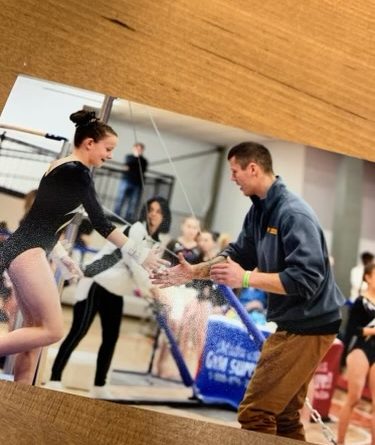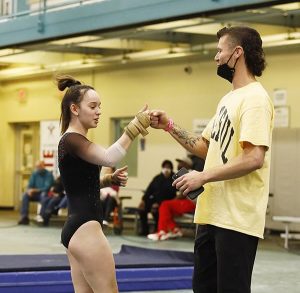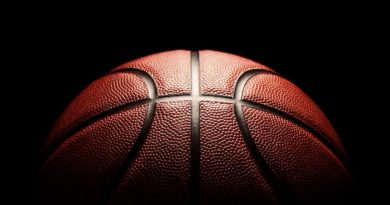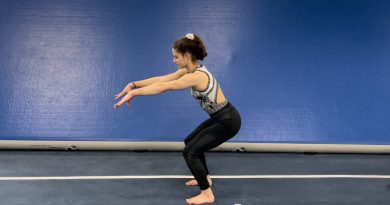Positive Youth Development
The 5 Cs of Conscious Coaching
Article Written by Logan Hursh
I want you to remove the technical and tactical elements from your lesson plans and training. Apart from back handsprings, full twisting Yurchenko vaults, release skills on bars … what are you teaching your athletes? Most of you will reply with something like “teamwork, focus, confidence, mental toughness” and so on. Those are great responses. But are you really? You see, there is a misconception that sport participation inherently develops these traits: teamwork, emotional regulation, arousal control, attention control, resilience, goal pursuit, cognitive flexibility, etc. I will refer to these traits as life skills from here on. This article will cover some of the most important factors to coaching for Positive Youth Development.
“Life skills can be defined as skills that are required to deal with the demands and challenges of everyday life.” (Hodge & Danish 1999).
Yes, sport participation can result in these positive outcomes, but it has negative outcomes too. Inappropriate parent behaviors, peer rivalries, disordered eating, injuries, unethical behaviors such as lying, cheating, and performance enhancement drug use, to name a few.
Most coaches want their athletes to have positive experiences and to develop life skills. But merely participating in sports does not necessarily produce these positive outcomes. These benefits depend on how coaches, parents, and peers contribute to the youth sport experience.
Positive Youth Development
Positive Youth Development (PYD) is an umbrella term for ways to create optimal developmental experiences for kids (Holt & Neely 2011). These experiences enable individuals to lead healthy, satisfying, and productive lives as youth and later as adults. Teaching life skills through sport are fundamental learning outcomes in PYD (Camire & Santos 2019).
Coaches, you are essential ingredients in your athlete’s experiences.
In the lives of youth athletes, coaches are important non-parental sources of influence, and are directly responsible for delivering sport programming and are in privileged positions to teach life skills (Cope, Bailey, Parnell, and Nicholls 2017).
Coaches who have clear cut philosophies to promote PYD prioritize personal development of their athletes before competitive success.
The 5 Cs
The 5 Cs are psychological, behavioral, and social characteristics that indicate youth are thriving (Lerner & Lerner n.d.)
Now, remove the medals, trophies, placings, and banners from youth sport, and how do you measure the success of your season?
Are your kids walking away with improved competence, confidence, character, connection, and compassion?
- Competence: the ability to act effectively
- Confidence: belief in one’s ability to succeed; a sense of self-worth and mastery
- Character: a connection to principles and values; socially and culturally responsible; sense of independence and individuality
- Connection: feeling of belonging; positive bonds with people around you
- Compassion: sympathy and empathy for others (and oneself)
Additionally, when high levels of the 5 Cs develop, a sixth C develops— contribution. Contribution references adding value to the self, community, and society.
For me, this is how I measure my success as a coach. My philosophy is that the performance outcomes will take care of themselves, IF I am taking care of the kids.
“If you coach the person, the skills will develop.” – John Kessel, American Volleyball Hall of Fame Coach
Now, I am not saying that high performance and life skill development are mutually exclusive. What I am saying is life skills and the 5 Cs require conscious coaching.
Ways to Promote PYD
| Elements: | What this looks like: |
| Appropriate training environment that is physically and psychologically safe (Strachan, Cote, & Deakin, 2011) | Athlete readiness assessments; appropriate learning progressions and tools; hand spotting; safe gym equipment; evidence-based training methods (volume, intensity, frequency)
Learner safety; inclusion; bi-directional communication; accountable decision-making
|
| Specific strategies to foster life skills that will be useful within and beyond sport (Holt, Tink, Mandigo, & Fox, 2008) | Teach deliberate lessons on psychological skills (goals, imagery, emotional control, etc.); guide performance prompts and reflections; mentoring; embrace high-pressure events |
| Provide performance-contingent technical feedback and praise while engaging in few punishment-oriented behaviors (Smoll & Smith, 2002) | Provide feedback that is objective and appropriate to the learner; provide unconditional support; reinforce natural consequences
|
| Supportive interactions between coaches, teammates, parents, and peers (Strachan, Cote, & Deakin, 2011) | Transparency and humility; parent meetings, team meetings, individual meetings; group activities; team events
|
This is “big picture” coaching. The elements of PYD can transform your athletes’ lives. But you must think beyond cartwheels and composition.
We have plenty of technicians in the sport of gymnastics and over the last few decades we have experienced our share of performance-outcome driven success. But at a cost.
Fortunately, our sport is under reform and there is a surge of up-and-coming coaches taking an athlete-centered approach to gymnastics development, a rise in conscious coaching.
So, I will ask again: Coaches, what are you teaching your athletes? What does success look like to you?
Maybe you are a new coach looking for direction . . . Or you could be a burnt-out coach in need of some change . . .
If you take care of the person first, then skills… performances, and scores will take care of themselves.
References
- Camire, C., & Stanos, F. (2019) Promoting positive youth development and life skills in youth sport: Challenges and opportunities amidst increased professionalism. Journal of Sport Pedagogy and Research, 5(1), 27-34 2.
- Cope, E., Bailey, R., Parnell, D., & Nicholls, A. (2017). Football, sport, and the development of young people’s life skills. Sport in Society. 20, 789-801.
- Hodge, K., & Danish, S. (1999). Promoting life skills for adolescent males in sport. In A. M. Horne & M.S. Kiselica (Eds.), Handbook of counseling boys and adolescent males: A practitioner’s guide, (pp. 55-71). Thousand Oaks, CA: Sage Publications
- Holt, N.L. & Neely, K.C. (2011). Positive youth development through sport: A review. Revista De Iberoamericana de Psicologia Del Ejercicio y el Deporte, 6(2), 299-316.
- Holt, N. L., Tink, L. N., Mandigo, J. L.,& Fox, K. R. (2008). Do youth learn life skills through their involvement in high school sport? A case study. Canadian Journal of Education, 31, 281-304.
- Horn, T. (2008). Coaching effectiveness in the sport domain. In T. S. Horn (Ed.), Advances in sport psychology (3rd ed., pp. 239-268). Champaign, IL:Human Kinetics.
- Lerner, R.M., & Lerner, J.V. (n.d.) The 5 cs model of positive youth development. http://exploresel.gse.harvard.edu/frameworks/52
- Smoll, F. L., & Smith, R. E. (2002). Coaching behavior research and intervention in youth sport. In F. L. Smoll & R. E. Smith (Eds.), Children and youth in sport (pp. 211-231). Dubuque, IA: Kendall/Hunt.
- Strachan, L, Cote, J., & Deakin, J. A new view: Exploring positive youth development in youth sport contexts. Qualitative Research in Sport, Exercise and Health, 3, 9-32.






